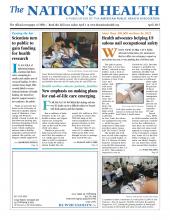Drunkenness equals hilarity, according to some of the most popular videos on YouTube. Yet very few videos show the consequences of alcohol use, a recent study finds.
More than three-quarters of videos examined in the study, which was published in March in Alcoholism: Clinical and Experimental Research, used humor while showing intoxication. The videos have more than 333 million combined views.
“We thought this was important because we know media representations of alcohol are influential in other areas, like TV and movies and advertisements,” said Brian Primack, MD, PhD, a study author and associate professor of medicine, pediatrics and clinical and translational science at the University of Pittsburgh School of Medicine. “However, there is also research that shows you’re influenced by peers. If you think about it, social media — especially visual social media — is a conglomeration of these two elements.”
Researchers analyzed 70 videos tagged with words such as “buzzed” across six categories, including the consequences of alcohol and characteristics associated with alcohol use. Each category was assigned a series of codes. For example, when looking at the characteristics associated with using alcohol, codes were assigned or use of humor or substances such as marijuana.
Only 7 percent of videos had any reference to alcohol dependence, the study said. Humor was used in 79 percent of the videos and motor vehicles were present in 24 percent, the study said. While 89 percent of the videos pictured men, only 49 percent pictured women.
What struck Primack the most, he said, was that 44 percent of the videos mentioned a brand name of alcohol. Liquor was the popular type of alcohol mentioned, followed by beer and then wine.
“This is a large exposure,” Primack told The Nation’s Health. “Brand recognition and involvement are very important steps in the transition to alcohol use and alcohol abuse among young people.”
Primack said it is important to be aware of how potentially powerful Internet videos are as a medium. Teaching young adults media literacy skills that help them analyze and evaluate what is marketed to them may be an effective intervention, he said.
“We in public health shouldn’t just ignore this large exposure,” Primack said. “We should integrate into prevention programming how to deal with it, and we should think about ways that we can possibly use this medium to spread public health-related messages.”
For more information, visit http://onlinelibrary.wiley.com/doi/10.1111/acer.12640/abstract.
- Copyright The Nation’s Health, American Public Health Association









